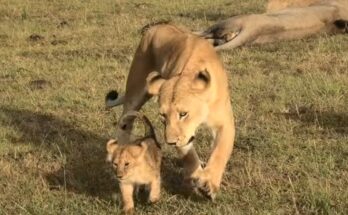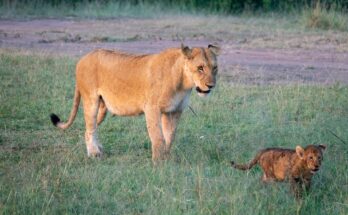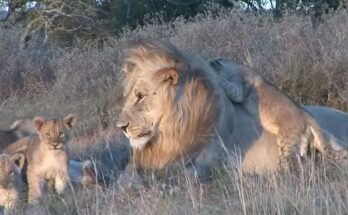
In the golden savannas of Africa, the return of a lioness to her den is a moment of pure joy for her cubs. Hidden in the tall grasses or nestled in a shaded thicket, these young lions wait patiently—often for hours—while their mother hunts or patrols her territory. Though still too young to accompany her, the cubs sense the rhythm of her absence and eagerly anticipate her return.
When the lioness finally appears, the mood transforms instantly. What was once a quiet, cautious wait erupts into a celebration of movement and sound. The cubs bound toward her with soft mews and high-pitched squeaks, tails upright and eyes wide with excitement. Their tiny paws kick up dust as they scramble to be the first to reach her. It’s not just about feeding—though her return often means a fresh meal—but about warmth, comfort, and connection.
The mother lion responds with gentle nuzzles and soft growls, licking her cubs clean and rubbing her head against theirs. This affectionate greeting is more than just maternal love; it reinforces their bond and helps the cubs feel safe and secure. Even the smallest gestures—a flick of her tail or a deep, familiar purr—are enough to soothe them.
This joyful reunion is a vital part of the cubs’ development. Each return strengthens trust and teaches them the rhythm of lion life: patience, survival, and family. In these brief but meaningful moments, we glimpse the emotional depth of wild creatures often thought to be purely instinctual. For lion cubs, their mother’s return is more than routine—it’s a celebration of life, warmth, and the unbreakable bond of their pride.


